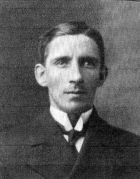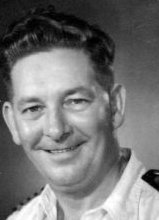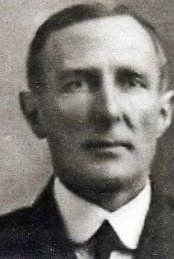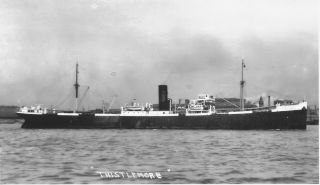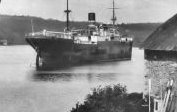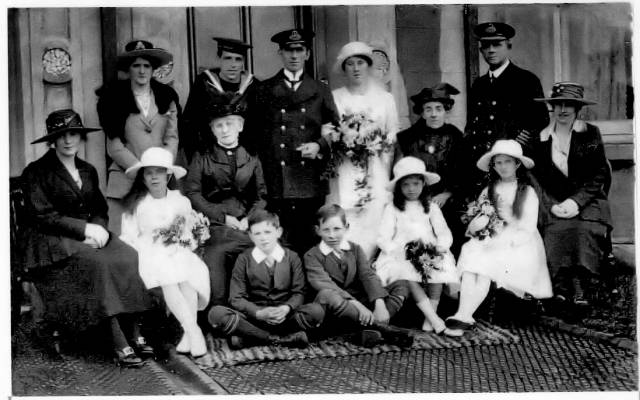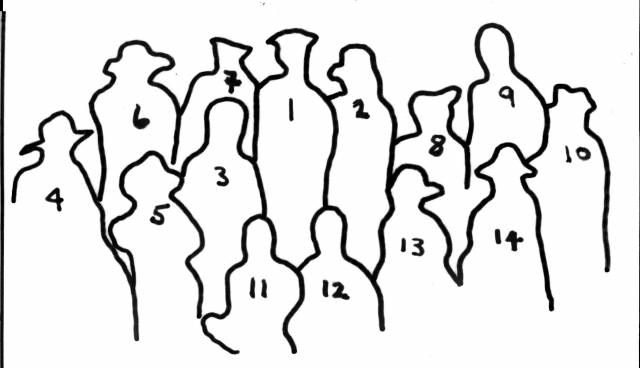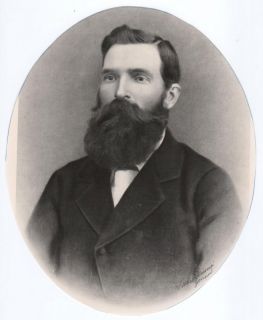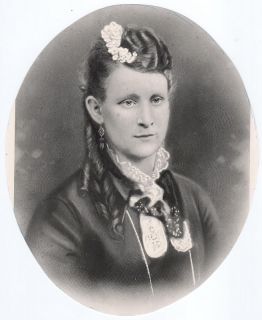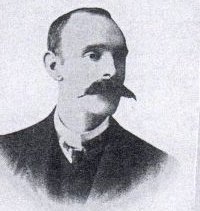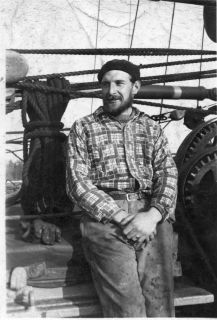REES AND JAMES MARINERS
Six years after the Battle of Culloden a John Rees mariner, was born at Borth in 1752. He was master of the sloop Providence in 1774, and in 1823 was recorded as having sent a petition to Trinity House seeking a pension. Whether he was a progenitor of the following Rees dynasty is speculative. The Rees family history for this site has been provided by William Edward “Ed” James of Gloucester. It traces one Rees line which became entwined with the James family.
It begins with John Rees b.1788, who married Jane Jenkins b.1790. They had four children, two boys and two girls. The eldest son John 1820-1880, lived with his wife Anne at Morfa Borth. John became a master mariner in 1852 and captained the Catherine & Margaret, Miss Evans and the Acorn. His brother Hugh 1825-1902, was also a master mariner who lived at Beachgrove House with his wife Margaret, formerly Thomas. They had four children, one of whom Hugh Rees 1861-1906, became a captain in 1885 and commanded the S.S. Glanhavren. He married Elizabeth Jane Williams 1868-1937, and had eight children; 2 of whom became mariners. David Hugh Rees 1892-1962, was a chief engineer who had a long and distinguished maritime career spanning 45 years. He served on the Thistlemore, Ardgroom Invertay, Bradburn, Quebec City, Victoria City, Leeds City, Texas Trader, Empire Kestrel, Vernon City, Anglo Indian, Empire Takoradi, Tacoma City, Orient City, Madras City and Inchcastle. His brother Joseph Rees 1905-1965, became a captain.
DAVID HUGH REES CAPTAIN JOSEPH REES
CAPTAIN EVAN JAMES WILLIAMS
THISTLEMORE EARLSPARK
CHIEF ENGINEER D.H. REES AND HIS BRIDE ANNIE BERTHA JAMES
1. David Hugh Rees 2. Annie Bertha James 3. Margaret James - Mother 4. Enid Rees - Sister 5. Edith Rees - Sister,
6. Martha Helena James - Sister 7. Jack Rees - Cousin 8. Elizabeth Jane Rees - Mother 9. Jack Watkin-Williams - Step Brother 10. Madge Rees - Sister 11. Reggie James - Nephew 12. Joseph Rees - Brother 13. Lolo James - Niece
14. Mattie James - Niece
Farmer Richard James, circa 1760, and his wife Margaret had a son Enoch James b.1787, who married Mary Hughes b.1789, in 1809. Enoch was a master mariner and the only vessels we know of that he commanded were the sloops Aid and the Mary & Ellen. Enoch and Mary had seven children and four of their sons became master mariners. David b.1812, married Martha Hughes b.1820, and captained the sloop Gleanor and later a schooner also named Gleanor. These vessels and others were owned by the James family and are commemorated in the house named Gleanor. Richard 1816-1894, captained the Gleanor and also the schooner Aberystwyth in the 1850’s. John b.1819 who married Anne Jones became master of the Dovey Belle, Resolute and Beatrice. Enoch 1822-1886, and his wife Jane 1826-1908, lived at Morfa Borth. He captained the schooners Aquila, Aberystwyth and the Beatrice.
Members of the James family of mariners feature throughout this website. They not only commanded ships, but owned many which are still commemorated in the Borth house names Gleanor, Beatrice, Resolute and Dovey Belle. Enoch James born in 1787 who became a master mariner. John James b.1813 was master of the Resolute and the Dovey Belle and a Richard James 1815-93 commanded the Aberystwyth. William James b.1820 commanded the sailing vessels Aberystwyth, Island Maid, Ocean Belle and the Dorothy, and eventually went to live in Aberdyfi to be near his shipping interests. He owned the barque Glendovey which was ably commanded by his nephew John Williams. There was another John James b.1845 who was master of the Dovey Belle in 1881. There was Captain John James 1875-1932, who was master of the Western Coast and the Dolphin. he died on board the Dolphin at Falmouth on 29th August 1932, he is profiled elsewhere on this site.
Captain David James b.1812, had two girls and three boys, of whom Hugh James 1843-1916 and John Hugh James 1855-1918, became master mariners. Hugh James passed as captain in 1868 and commanded the barques Carmarthen Castle and the Hawarden Castle, and the steamers Orianda and the Bernina. John Hugh became captain in 1886 and in 1904 he was sub lieutenant in the R.N.R. serving on the Miniera. He was later master of several Park vessels including the Wellpark and the Mountpark. He had married Ellen Jones 1857-1932 and lived at Richmond House.
BERNINA
Maggie Brown 1851-1940, was born in South Wales and went to America with her aunt at the age of six. At eighteen years of age she married a John Williams of Scranton; also of Welsh extraction. Before a year had passed, her husband had died leaving her with a young child, John Watkin Williams. They moved from Scranton to San Francisco and it was there that Maggie met her second husband to be, previously mentioned Borth man, Captain Hugh James 1843-1916, at a dinner held at Custom Offices House.
CAPTAIN HUGH JAMES AND HIS WIFE MAGGIE
Captain H. James 1843-1916, had begun seafaring on local schooners, in particular the Borth owned Gleanor, which was commanded for over a decade by his father Captain David James. Hugh was captain of the barques Hawarden Castle, Carmarthen Castle, rounding Cape Horn many times on his way to the west coast of South and North America. Hugh and Maggie married in 1877, and later they and her son returned from San Francisco to live at 2 Picton Terrace. From there they moved to a large new house Scranton Villa.
The stepson, John Watkin, influenced by Captain James and Borth’s seafaring ethos, became a master mariner and commanded Booth Line Vessels. He was honoured by the Liverpool & London War Risks Association Ltd. after successfully evading a submarine attack whilst in command of the S.S. Benedict in July 1918, where his seamanlike skills and courage were rewarded with a gift of 100 guineas.
Hugh and Maggie sailed together to all parts of the world for a number of years. On one voyage on the barque Carmarthen Castle, she gave birth to a son Hugh, five days out from Rangoon. This displayed her strong constitution and great mental and physical courage. They had eight children, two girls and six boys. Sadly two of the boys died within a year of birth; David at 8 months and Richard Harold at 12 months. Later another two sons were to die, Reginald, of tuberculosis at twenty-one years of age, and Hugh, who was born at sea, also lost his life at sea in 1918 when his ship the S.S. Penvean was torpedoed. His mother the intrepid Maggie lived to be 90 and had travelled the world and experienced many triumphs and tragedies.
Born at sea Hugh 1880-1918, married Marie Bywater, whose brothers first officer Thomas Bywater and Captain William Bywater, both lost their lives at sea. Their union produced four children, three daughters, Martha Jane Evelyn 1908-1983, Margaret Novella 1912-2003 and Elvy who died at two years of age in 1912. Their son Thomas Reginald James b.1907 followed in his ancestors footsteps and went to sea. Sadly Reginald died after falling into the hold of the S.S. Beechpark fracturing his skull. He was only sixteen at the time, and at the beginning of his seafaring career. The Cambrian News of 13th April 1923 reported that sixteen Borth men had transported the young man’s body to Glasgow Railway Station for his last journey home. These various crew members also collected thirty two pounds to be sent to his widowed mother Maria.
HUGH JAMES REGINALD JAMES (FRONT RIGHT)
Ships engineer D.H. Rees’s sister Mary Elizabeth “May” 1898-1978, married David Hughes 1895-1961, who had been a stretcher bearer in the First World War and ran a shop at Boston House. I was very fond of David and May as their kindness was legendary, and this passed on to their son Hugh David Hughes 1929-2006, and daughter Margaret Noreen Hughes 1933-2004. Hugh D. Hughes, or Hugh “Boston” as he was better known, went to sea and served on the Angelo, Seaboard Enterprise and became third officer on the liner Queen Elizabeth for several years. Hugh married Verona Evans b.1935, and his sister Noreen married Alan Sharpe 1931-1999. Noreen was named after a relative who had died of tuberculosis. She was Noreen Williams 1895-1928, the daughter of Captain Lewis Williams 1868-1952, and sister to First Officer Llewelyn Vernon Williams 1897-1980.
HUGH "BOSTON" HUGHES
FOOTNOTE
The progenitor of the James maritime clan at Borth was the redoubtable Enoch James 1787-1856, son of tenant farmer Richard James 1750-1817 and Margaret 1748-1836 who were married at Llandre in 1772. At the time of Enoch's birth, the family were farming Ty Gwyn, Ynyslas Borth.
It was there that Enoch in his early youth decided on a seafaring career, inspired by the shipping movements at the port of Aberdyfi which was only a ¼ of a mile across the river. He had quickly realised that an investment in the maritime industry could provide prosperity. Other farming maritime families were plentiful at Borth with the Jones' of of Fforsygravel, Morris' of Brynowen, Daniels of Pengraig, Pryse's of Brynbwl and Rhiwlas, other James’s of Henllys and Tai Canol, Lewis's of Pantygerddi, Williams of Moel Ynys. All these families produced master mariners, and many were ship owners.
Enoch was born and lived his formative years during a tumultuous time in history. This included the American War of Independence, French Revolutionary Wars and the Napoleonic Wars followed by a decade long depression in the 1840's. That he thrived in these conditions is a testament to his business acumen, intelligence and an indomitable spirit. All this international strife meant that most Welsh maritime trading was limited to the Irish Sea. Local coastal sloops were the workhorses until they were later superseded by the larger schooners serving Aberdyfi's slate exporting boom. Within Britain these wars and the depression that followed were exacerbated by extensive land enclosures that increased the poverty and hardship for rural workers as their grazing land and peat turbaries were no longer accessible: therefore, pauperism increased. Tenant farmers were slightly more secure, and records show how many from this group invested in shipping. It was the only opportunity to better their lot. It is to be remembered that this was not an age of consumerism. The rural community were content with only the necessities of life. No frivolous spending meant that savings were made. This frugality was the main building block of their maritime involvements.
The 1840's depression increased the state of wretchedness for many. Borth was at this time described as a “nest of paupers” and it took half century to eradicate pauperism from the village. This was achieved totally by the endeavours of the village’s maritime exploits. The James family played a major role in this achievement. Their seafaring involvement lasted for nearly two centuries from 1780 to 1960. Essentially, they were near the beginning through to the end of Borth's seafaring ethos that created and sustained the growth of the village and gave it a glorious history.
In Borth there were sloop owners in the early 1700's funded by tenant farmers, groups of fishermen, tradesmen such as blacksmiths and dozens of villagers who got together to buy a share or shares. Prior to the late 1700's the tiny conurbation was on the southern uplands, essentially a farming and herring fishing community. Many farms relied on the autumn fish harvest to smoke and salt providing protein through the damp cold winters of West Wales. This communal effort was echoed and enlarged over time in their maritime enterprises where one share in a vessel could mean twenty subscribers. The expansion of Borth onto the Morfa was necessary for the increasing population, again driven by maritime endeavours.
Despite the belief that Ceredigion was poor and backward and that its tenant farmers were little better than labourers, research proves otherwise. Richard Moore-Colyer stated that tenant farmers “contributed to the economic development of the county by investing in coastal trading, fishing, or other sectors of the rural industry. In any event, the fact that some farmers died in possession of quite considerable wealth gives lie to the quite erroneous belief that they were, as a class, universally poor and constantly on the brink of penury”. Moore-Colyer, Cardiganshire County History, vol 3, 1998. For more elaboration refer to the excellent article by John Rowlands titled Investment in Shipping..the Port of Aberystwyth 1824-83, Maritime Wales, no.36, 2015.
The James clan’s antecedents come out of the historical mist farming along the southern fringes of the river Dyfi. They are recorded at Penpompren Farm in the 1740's. This is explained extensively in the following obituary that appeared in the Cambrian News in 1901 reporting the death of the late Mr John Jones Penpompren Mochno.
He belonged to an interesting old family. The Shamsod, Shon Shams, i.e. John James, lived in the eighteenth century at Tanygraig, now called Tymawr Mochno, which he owned, together with Goetre Fach and Goetre Fawr, and had the following children, who all settled down in the parish and brought up large families - David, James, William, Thomas and Betty. Betty married Siencyn Evans, Goetre. She loved animals and to have them as near her as possible day and night. She occupied one end of the house, the cow the other, and the pig resided in the passage, whose warm breath in winter answered the purpose of a stove. The fowls had the run of the whole house - Betty used to kill the pig herself with the assistance of two or three picked young men who would take a serious view of the sacrifice. Occasionally three serious youths, overcome by the tragic or comic aspects of the function would, when the priestess held the knife ready to strike, let go the victim, which immediately took advantage of its liberty and sought refuge under the bed or table. Thomas, or Twm Shon Shams, as he was called, had a small holding at Craigypenrhyn, and was the father of the late James James, still remembered as "James y Graig" and Ann Roberts. William, called Will Shon Shams, lived at Llanerch, and was the father of the late James Jones, (Wesleyan Minister) Bess Morgan, William Jones (Llanerch) and Mary, the mother of James Jones late of Free Trade Hall, Taliesin. James married Ann, daughter of William Lewis, Tyhwnt, and lived at Bryngruffty, Ynyslas, and Dolenydd. The late William James, Gelly, was his son. David, or Dafydd Shon Shams, married Jane of Argoed and lived at Goetre. From them are descended the Goetre group of the Shamsod, an exceedingly large and influential group, quite a clan, and the late John Jones, Penpompren, was for some years past their laird. Dafydd Shon Shams had a large family, but the writer only remembers two of them: (1) Margaret Morris, Goetre, the mother of Jane Joel, Rock House, Eliza Rees, Tre'rddol, and Ann Edwards, Aberdovey; (2) James Jones who married Mary, daughter of Mr. Morgan Excise Officer, Machynlleth, and had the following issue: David (deceased) Goetre, John (deceased) Penpompren, James, Tymawr, Evan, for many years incumbent of the Wesleyan church, London, and now king of Cors Fochno; Owen (deceased) vicar of Llanfair juxta Harlech: Mary (deceased) mother of Capt. D Williams, Tre'rddol: Margaret Davies, Diana House, Borth, Jane Jones (deceased) Goetre: Eliz Edwards, near Ruthin: Sarah Edwards, Rhyl: and Ann Arter, Taliesin. John Jones married Jane Jones of Penpompren and has left the following children: John, who succeeds on the farm and to the Goetre Fach properties; James, curate of Holyhead; Mary, Margaret, Anne; Jane, wife of the Rev J D Lewis, vicar of Pencarreg; Sarah and Elizabeth, for all of whom much sympathy is felt in their bereavement. ...It is a moot point whether the family name should be Jones or James. The old man of Tanygraig Mochno - their forefather - was called Shon Shams i.e. John James; the Dolenydd branch has retained that surname, and so did the Llanerch branch until recently, when they changed it for Jones. They are called Shamsod and not Shonsod and the late Bishop of St Davids was of the opinion that James is the correct patronymic. The formation of surnames, both Welsh and English, is an interesting study, but the subject cannot be pursued any further in the present connection. These details are somewhat dry and only of local interest, but they concern a large number of readers of the Cambrian News and are of immense interest to them and their friends and neighbours.
MALE FAMILY MEMBERS IN CHRONOLOGICAL ORDER
- Enoch James 1787-1856 M.
- David E James 1811-1870. M
- Richard James 1815-1894 M.
- John James 1818-1884 M.
- Enoch James 1821-1886
- Hugh James ? - 1844
- John James 1841-1921 M.
- Hugh James 1844-1916 M.
- Evan James ?- 1903
- John H James 1855-1916
- John James 1875-1932 M.
- Hugh James 1880-1918
- Richard James 1881-1897
- David James 1886-1907
- Hugh James 1889-1908
- Thomas Reginald James 1907-1923
Several of the above died at an early age:
In 1844 Hugh James fell into the Dyfi where his ship had anchored and was swept out to sea, his body was not recovered.
In 1884 John James died on the schooner Mary and Ellen.
In 1897 Richard James fell overboard from the Dovey Belle whilst she was at anchor. His body was not recovered. This probably hastened the sale of that schooner to Aberdyfi owners.
In 1907 David James died in hospital in Norfolk U.S.A. after catching a fever whilst on board the S.S. Birmingham.
In 1908 19-year-old Hugh James disappeared whilst serving on the S.S. Wellpark.
In 1918 Hugh James who was born at sea, drowned after the torpedoing of the S.S. Penvean.
In 1922 Thomas Reginald James died on the S.S. Beechpark after falling into the hold whilst the ship was tied up at Glasgow.
This family were seafarers for nearly 200 years all because of an entrepreneurial tenant farmer.
FEMALE FAMILY MEMBERS
- Margaret James ? -1895, married M.M. Richard Jones ?-1845
Sons:
David Jones 1834-1891 M.M.,
Richard Jones 1861-1939 M.M,
John James Jones 1965-1891 M.
- Annie James 1879-1917, married William J Hughes 1871-1918, M.
- Elizabeth James 1884-? Married James D Lloyd 1880-1954, M.
- May James ?-1889, married Richard Jenkins ?-? M.M.
Son: Richard Jenkins 1824-1912 M.
- Annie Bertha James 1893-1981, married David Hugh Rees 1892-1962 M.M.
- Mary James 1855-1905, married John Ellis, Shoemaker.
Sons:
David Ellis 1880-1961 M.M.
John Hayden Ellis 1886-1940 M.
Rowland Hugh Ellis 1893- 1960 M.
John David Ellis 1917-2010 M. Gordon Ellis 1927-? M.
Daughter:
Sarah Pryce Ellis 1884-1968 married John M Evans 1881-1954,
Son: John Hayden Evans 1912-1968 M.
The James women married into other Borth seafaring families thus expanding and ensuring the James involvement in Borth’s seagoing history. Descendant John Ellis is in the process of producing a very detailed and comprehensive record of the James’ and their extended families. James mariners appear throughout this website and Captain John James 1875-1932, has his own profile.
Other branches of the James family tree have, and are, being researched by John Ellis of Aberarth, David Rowlands Australia and Betty Vodanovich New Zealand.
